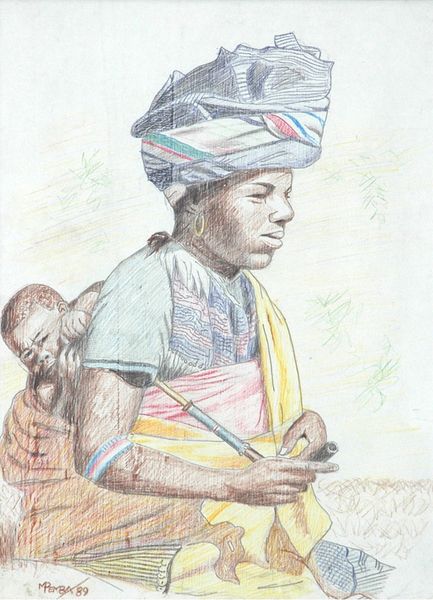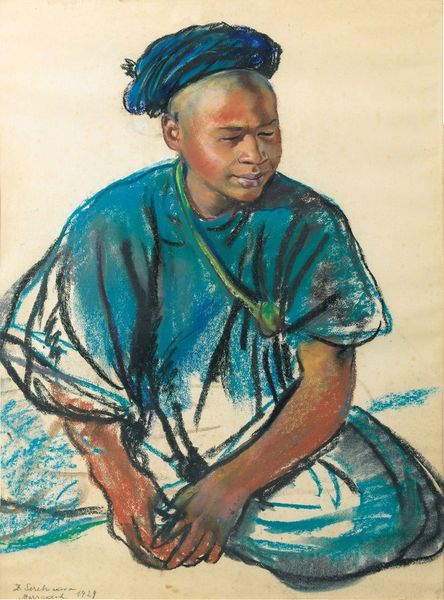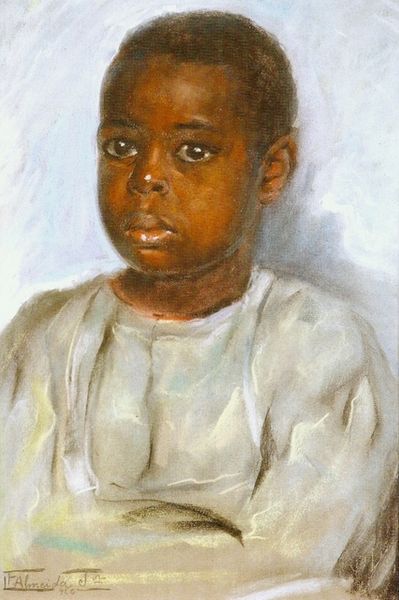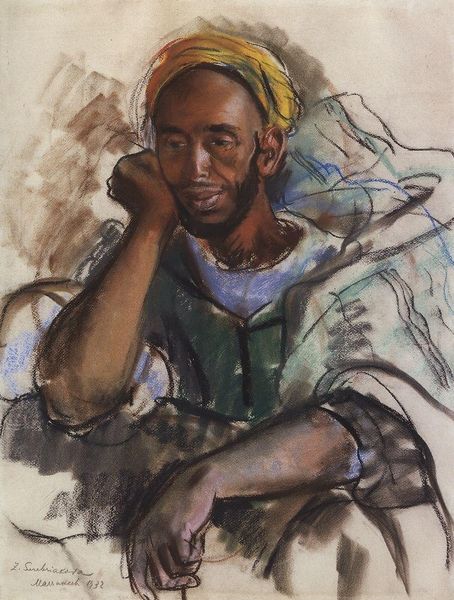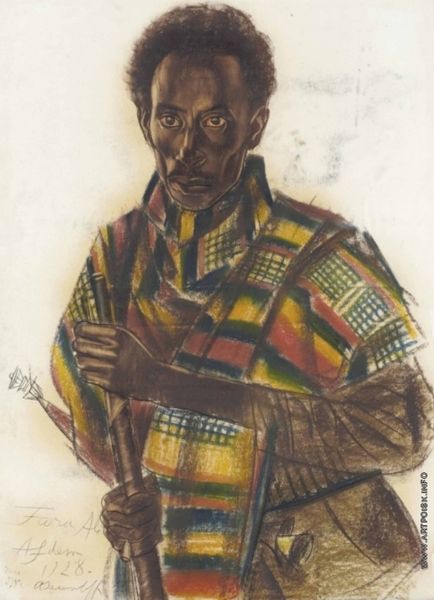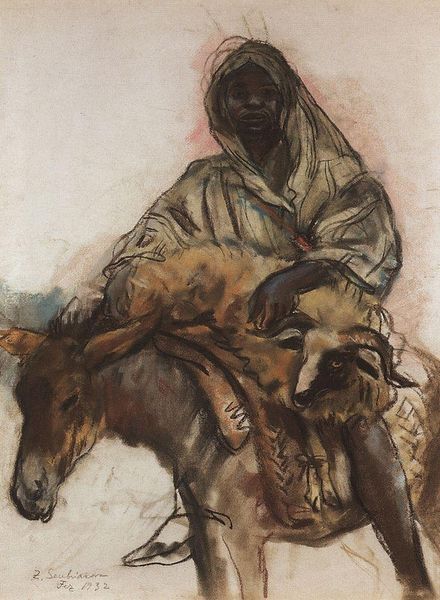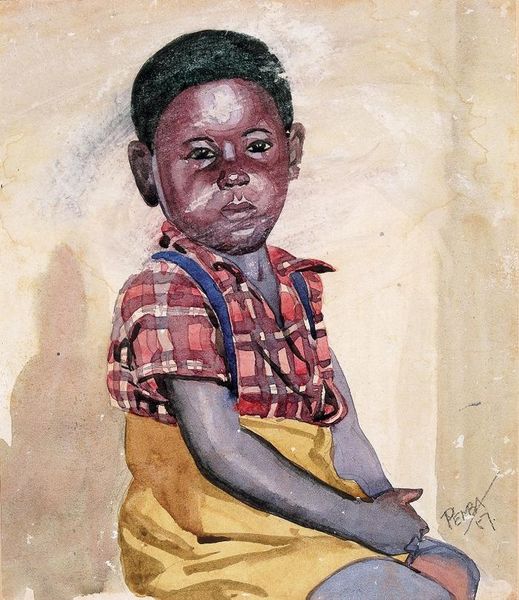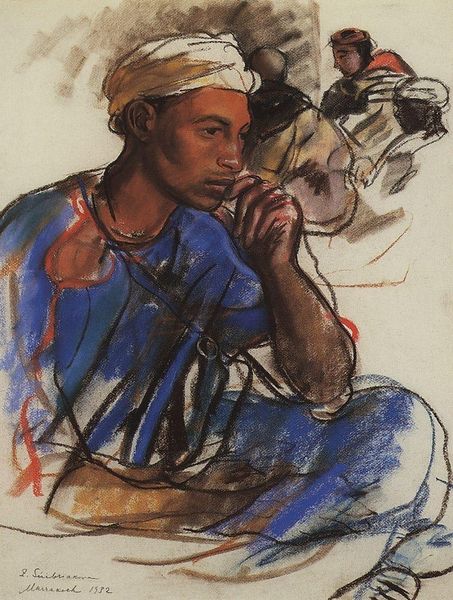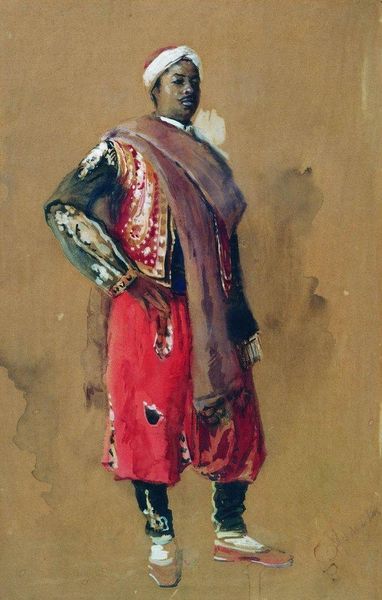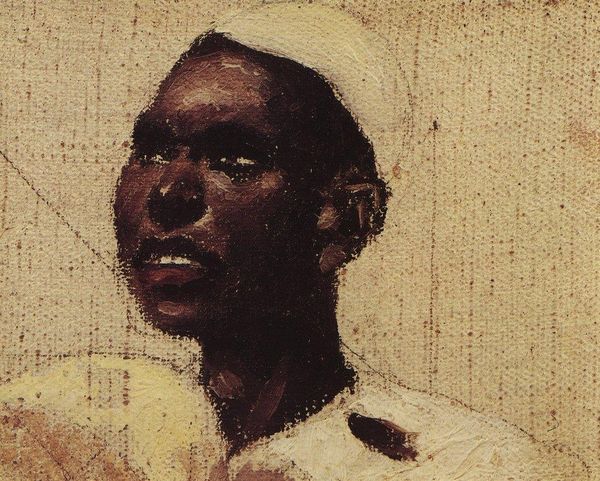
Copyright: Zinaida Serebriakova,Fair Use
Curator: It has such a quiet gravity, doesn't it? Editor: Yes, it possesses a sense of somber nobility. We're looking at "Water Carrier, Morocco," created in 1928 by Zinaida Serebriakova, a work rendered in pastel. The overall composition—especially the diagonal emphasis—gives it movement and a feeling of lived-in immediacy. Curator: The subject, for me, is framed as both timeless and very specific. He embodies a very human role, water carrier, while his gaze seems to carry the weight of his people. Water, of course, as a symbol, has tremendous resonance across cultures – life, cleansing, purification. Editor: Agreed. Serebriakova is adept at using light and shadow to build volume, evident in the rendition of the water jugs, but also across his features. There’s a deliberate contrast between the textured fabrics and the smoothness of his skin that enhances his physical presence. Curator: It strikes me that, although created in the Orientalist style, this doesn’t feel exploitative or exoticizing, and instead there's a certain depth and intimacy in his depiction. The landscape becomes almost secondary to him, fading slightly into the background, but you feel a genuine connection to him, as the main character in a wider environmental narrative. Editor: I concur. The economy of line is quite compelling. There is, certainly, attention paid to details, like the rope harness and metal clasping mechanisms, but the rest almost fades around them, throwing the portrait’s central character further into relief. His look has a complex sincerity, though it doesn't attempt photographic realism in any sense. The colors—ochres, browns, blues—they all seem to mute emotion just slightly while reinforcing it structurally. Curator: A piece like this invites reflection on the continuity of essential labor—a link between past and present in the face of modernization. Serebriakova beautifully conveys this stoic determination and grace through something so seemingly commonplace. Editor: Absolutely. It highlights how an artist, attentive to structure and form, can draw us into the psychological space of another human, allowing for silent dialogues that transcend place and time.
Comments
No comments
Be the first to comment and join the conversation on the ultimate creative platform.

